THE LITERATURE OF THE MIDDLE AGES
At the beginning of the XIII century in Azerbaijan literature, developed in Arabian and Persian languages under the influence of objective historical reality, we notice that poets and artists creating in their mother tongue increase in number. The ancient literature gives its turn to the beginning of the middle ages in Azerbaijan literature.
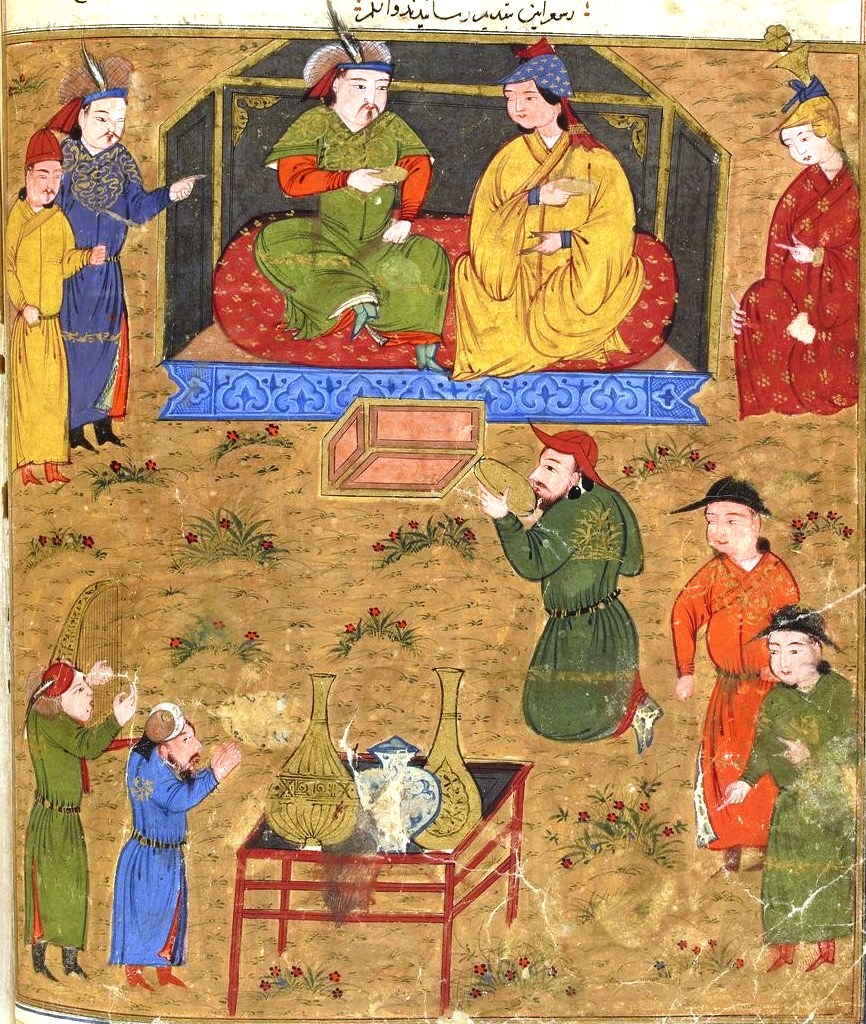
Lyrical poets like Izzeddin Hasanoglu and Sheykh Safiaddin Ardebilli mostly preferred to create worldwide poetic samples relating to the reality of the life, then lyric and epic samples with Sufi-mystic ideas created by the artists of other people. Three gazals of Hasanoglu in Turkish and one in Persian, a little divan of Sheykh Safi gives us a full description of native literature of that period and forms an idea that the future great poetry has got a strong foundation. The Sufi-mystic idea and characters weakly-defined in Hasanoglu's gazals prove that this flow is gradually degraded. Existing poetic samples proves that he was a great poet, with a rich creative experience. They hope to find more of his poetic works.
Among the epic poetic samples of XIII century, we must name an anonymous 'Dastani-Ahmed Harami'('The epos about Ahmed Harami') and the epic poem 'Gisseyi-Yusif' by Gul Ali. Both of the works can be called the object of presentation of high humanist values of Islam, in both of them the authors call the reader to the well, justice, philanthropy, honesty, conscience and belief, on which Shariat of Islam is based, they call a man to keep far away from inhuman bad patterns. Different from Middle century European knight novels, the main aim here is not the presentation of the events in an attractive form, but that of moral ideas on which the epic is based.
'Gisseyi Yusif' relating with sura 'Yusuf' in Koran, speaks about honesty and sincerity and their favour to a man.
Humam Tabrizi (1201-1314), the poet of South Azerbaijan, lived and created the whole XIII century and the first decade of the XIV, was a well-known social-political figure and a talented poet of this time. We know the epic poem 'Dehname' ('Ten Letters') and a 'Divan' in Persian by Humam Tabrizi. In his creativity, he used the school of Nizami Genjevi and pleasantly mentioned his name. The main idea in Humam Tabrizi's creation is as same as in Nizami Genjevi: the admiration of humanism and a human beauty-the main peculiarity of Turkish national mentality.
The epic 'Gulshani Raz' by Sheykh Mahmud Shabustary (1287-1320), well known in Azerbaijan literature as a representative of Sufism, deserves much attention in comparison with his other prosaic and poetic works. This work, written in the form of philosophical questions and answers, puts forward many scientific-social problems interested modern-outlook intellectuals and men of science of the time and they tried to find answers according to the knowledge of the poet.
Suli Fagih and Mustafa Zarir, Azerbaijan poets of the XIV century created works in mother tongue alike 'Yusif and Zuleykha' written on the motives of Koran. The epic 'Varga and Gulshan' by Yusif Maddah, the artist of the same period, is a corresponding specimen of epic poems written in the mother tongue. All abovementioned works played certain roles in the further development of epic poetry.
To overview the general progression of the that-period literature, XIII- XVI century works need a particular study. During the mentioned period, the native literature widens and progresses in quality and prevailed Persian-language literature, nevertheless part of literary creators kept the tradition of writing in Persian.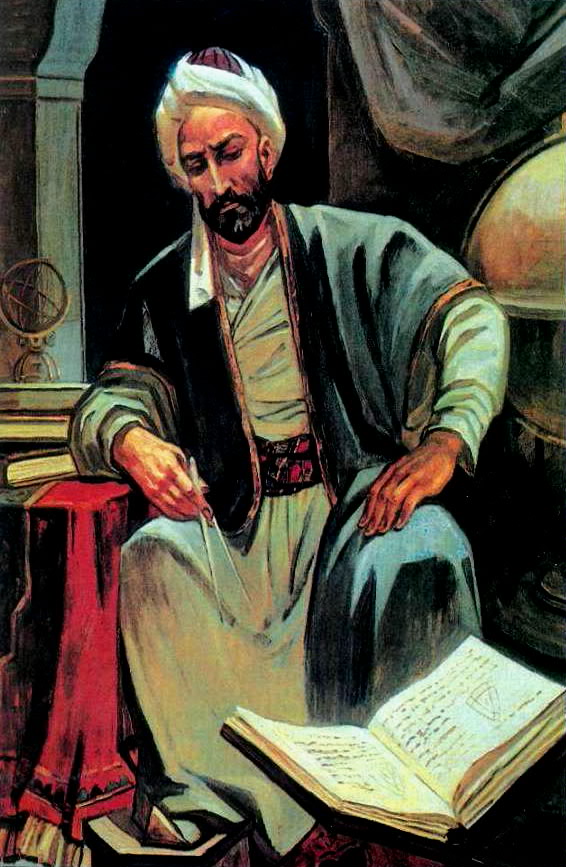 Famous Azerbaijan poets and thinkers wrote in Persian-Nasreddin Tusi (1201-1274), Maragali Ohvadi(1274-1338), Arif Ardabili(1311-) tried to create works following traditions of Nizami. Together with scientific-philosophical heritage Nasreddin Tusi, the author of fundamental moral-didactic work 'Ahlaki-Nasiri', created literary-artistic work. Epic poems of Maragali Ovhadi 'Jami-Jem' and 'Dehname' are considered to be an honorable specimen of Azerbaijan epic poetry. Most of the philosophical and humanitarian problems mentioned in these works keep their actuality for different societies. Stagnation, hopelessness appeared in the society after Nizami, in many of the artists works, as well as in the epic 'Mehr and Mushtari' by Assar Tabrizi (1325-1390) the pure feeling of love, found its genius description and admiration in 'Khosrov and Shirin' and 'Leyli and Mejnun' by Nizami, is looked upon as great and disinterested friendship between two young people. In the work with a difficult subject, we seize weak poetic completeness and clearness in comparison with the level of that of Nizami. At the beginning of the epic, the poet himself gives a high evaluation of the art of Nizami and praises its inaccessibility.
Famous Azerbaijan poets and thinkers wrote in Persian-Nasreddin Tusi (1201-1274), Maragali Ohvadi(1274-1338), Arif Ardabili(1311-) tried to create works following traditions of Nizami. Together with scientific-philosophical heritage Nasreddin Tusi, the author of fundamental moral-didactic work 'Ahlaki-Nasiri', created literary-artistic work. Epic poems of Maragali Ovhadi 'Jami-Jem' and 'Dehname' are considered to be an honorable specimen of Azerbaijan epic poetry. Most of the philosophical and humanitarian problems mentioned in these works keep their actuality for different societies. Stagnation, hopelessness appeared in the society after Nizami, in many of the artists works, as well as in the epic 'Mehr and Mushtari' by Assar Tabrizi (1325-1390) the pure feeling of love, found its genius description and admiration in 'Khosrov and Shirin' and 'Leyli and Mejnun' by Nizami, is looked upon as great and disinterested friendship between two young people. In the work with a difficult subject, we seize weak poetic completeness and clearness in comparison with the level of that of Nizami. At the beginning of the epic, the poet himself gives a high evaluation of the art of Nizami and praises its inaccessibility.
'Jami-Jem', the largest work of Maragali Ovhadi, is of an encyclopedic character, giving an artistic description of most humanist ideas widely spread in the literary circle of that time. Alike the glass of Jamshid, the legendary ruler, informing him from everywhere of the world, the epic of Magarali Ovhadi discloses like in the mirror to the reader most of the aspects of human and social life, as well as natural events. Azerbaijan literature develops in world direction as in past centuries, and literature takes the position of a lively part of social and political life. That was why the creation of Gazi Burhanuddin (1314-1398), the poet and the ruler of the XIV century, was highly evaluated by Edward Brown, an English orientalist, as the first specimen of world poetry in Turkish literature. While reading chronicle 'Bezm ve Rezm'('The assembly and the fight'), by the historian of the palace Astrabadi, dedicated to life and activity of Gazi Burhanuddin, one greatly admire how such a great man could accompany his poetic activity with intensive and bloody struggle for realization of his ideals in terrible period of time and create 'Divan', which keeps its importance today. Azerbaijan literary language, founded in the creation of Hasanoglu and Sheykh Safi reaches its pick in 'Divan' of Gazi Burhanuddin, many poetic characters and phrases stabilize and is getting ready to the use of future artists. Gazi Burhanuddin is the first to use tuyug, the pure Turkish poetic genre. This genre is later met in the creativity of Nasimi and to 'Divan' of a great poet of Uzbeks Alishir Navai.
The principles of humanism formed in literature and the social-political idea of this period reaches its pick in the creativity of Seyid Imadeddin Nasimi (1369-1417). The works of this great poet, are somewhat the next great step towards the world, humanism and democracy not only in the literature of Azerbaijan people but also that of the Near and the Middle East. Imadeddin Nasimi, after his predecessor Nizami Genjevi, is known as one of the publicists, messenger of ideas of humanism, philanthropy in our literature. While people wanted to relax after several-decade Mongolian oppression, Amir Teymur, the famous conflicting ruler of middle century East, starts his attacks and thus the new stream of protesting the cruelty and the violence starts. The creativity of Nasimi is the result of such humanist protest, of opposition to cruelty and violence, of the struggle for human rights. The ideas of Hurufism used by the poet was something like facing. The works of Nasimi released from that facing today amaze the modern reader with the deep humanist plot, the wealth of respect and love to a human. Different from other hurufists, wrote their works in a special coded language, firstly from his teacher Fazlullah Naimi, the purpose of Nasimi was to protest cruelty and violence in his native language, thus calling people to hate anti-human attitude, to strengthen the wave of protection. His idea of a wise man raised to the level of the divine, was dedicated to simple people realized their human rights, free from social ugliness and wild instincts, realized himself as a person. Not only the creativity of Nasimi but also the whole his life surrounded by legend and tale is a school of courage and bravery, insistence on one's ideas, the fearlessness of death for a generation. The terrible punish given to the poet by reactionary priests for his freedom-loving humanist works-stripping off the skin while alive, made this great artist a model to the modern generation, as well as future one.
XV century in Azerbaijan literature is the crossing level between the picks Gazi-Nasimi and Khatai-Fizuli. Creation, at that period, of independent states Aggoyunlu and Garagoyunlu in the territory of the country brought some enlivening to literary life, developed native-language poem in character and the plot. Khalili, Hamidi, Kishvari, Hagigi, Sururi, wrote in the native language and Shah Gasim Anvar, Badr Shirvani, generally wrote in Persian, are inseparable from a literary picture of the period. The name of Jahanshah Hagigi (the reign 1436-1467), the head of Garagoyunlu state, should especially be mentioned among the names of the poets. As his predecessor Gazi Burhanuddin, he found the time to raise his head from the bloody fight and create his own divan. But his faith was as terrible as that of Gazi Burhanedin's, his 'brothers' Turks were killed by members of Aggoyunlu in terrible battles.
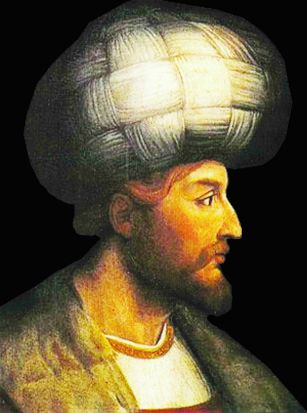
Hamidi, born in 1407 in Isfahan, the capital of Sefevids, 20 years lived in the palace of Fateh Sultan Mahammed for his personal application to Turkey in 50-s of the XV century, the author of a divan of lyrical poems, the historical work 'Tavarixi-Ali-Osman'('The history of generation of Osman'), 'Jami-suxanguy' ('Speaking piyala'), about fortune-telling and autobiographic 'Hasbihalname' is a well-known representative of XV-XVI century Azerbaijan literature.
One of the great representatives of XV century Azerbaijan literature is Nematullah Kishveri. He generally wrote his poems under the influence of Navai but showed new original poetic style in Azerbaijan poetic school. Using original poetic characters in poetry, Kishvari occupies a unique place in Azerbaijan literature. He lived in the palace of Sultan Yagub, the ruler of Aggoyunlu and was acquainted with his contemporary, Habibi, malikkushuara (monarch of the assembly) of Aggoyunlu palace.
The creativity of the that-period poets as Habibi, Shahi, Suruhi played a great role in the formation of the poetry of Khatai and Fuzuli. This is proved by the fact the great Fuzuli under the influence of Habibi's poem and wrote rich with devices taxmis to one of his ghazals.
In the XV century Azerbaijan literature, literary Azerbaijan language, which in many aspects was, till that period, common with the literary language of other Turkish people, possesses distinctive features and since XVI century continues its traditions as independent literature. XVI century Bagdad literary environment is especially characterized by deep influence to the national poetry. We may come across with names of that-time poets, influenced by Bagdad environment, in 'Gulshani Shuara' ('The Garden of poets') by Ahdi Bagdadi, the memoirist of the XVI century and in 'Mejmeul-Hevas' ('The assembly of the chosens') by Sadig bey Sadigi, the librarian of Shah Abbas, the role of which is indisputable in attaining wisdom of Fuzuli.
In XII-XVI centuries Azerbaijan literature the next pick of Renaissance ideas after Nizami is Muhammed Fuzuli, well known as 'heart poet' in western orientalism. The creativity of Fuzuli had not appeared by itself, great artists helped to form the personality of Fuzuli during a definite period of time. Shah Ismail Khatai(1487-1524), the great statesman and poet of Azerbaijan, the contemporary and somewhat patron of Fuzuli, occupies a particular place among them.
Shah Ismail Khatai is the founder of dynasty playing a particular role in the social and political history of Azerbaijan. In the face of poet-ruler, Khatai continued and developed the traditions of his predecessors Gazi Burhanuddin and Mirza Jahan Hagigi, and during his 36 years long life he did not only create and stretch the great state of Azerbaijan but also prepared the 'passage' to Fuzuli pick with his special role in development of native literature. The literary heritage of Khatai includes works written both in different genres of lyric and that of poem-couplet. Different from Fuzuli, who paid great attention to the scientific character of the poem and the usage of poly-layered poetic figures, Khatai preferred to write in the plain native language, and created poetic samples such as goshma, gerayli, varshagi, bayati, which are considered to be of secondary importance in classical poetry. His epic 'Dahname'('Ten letters') of sweet language is the first work written in Azerbaijan language on this theme. The poem presents ten letters from Lover to Beloved written in the form of epical-lyrical tahkiye. Gazels given in the text serve to disclose the mood of the heroes.
Khatai checked his capacity in the didactic genre and created the epic 'Neshhetname', calling to breeding and training of the younger generation. Shah Ismail Khatai, coming on reign when he was 14 and during 20-year long-ruling creating a great empire,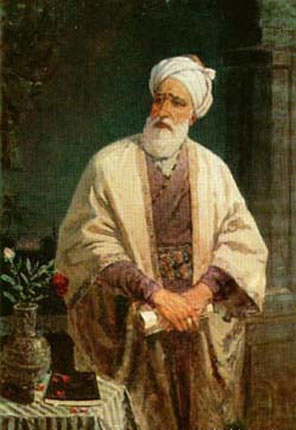 as well as with his rich artistic heritage aries the feelings of admiration and proud in the hearts of the following generation. Political activity, life and creative activity of Khatai awoke deep interest not only in Azerbaijan but also in world orientalists. Under the influence of such interest, the life and creativity of Shah Ismail Khatai, Azerbaijan poet and a statesman is still object of investigation of different generations of orientalists.
as well as with his rich artistic heritage aries the feelings of admiration and proud in the hearts of the following generation. Political activity, life and creative activity of Khatai awoke deep interest not only in Azerbaijan but also in world orientalists. Under the influence of such interest, the life and creativity of Shah Ismail Khatai, Azerbaijan poet and a statesman is still object of investigation of different generations of orientalists.
In Western civilization the creativity of Muhammed Fuzuli (1494-1556) is often compared with Barokko; the smallest poetic details found here their place, nothing is extra or unknown, poetic elements hardly seen with a simple eye, form 'monolith' artistic organism in harmony. According to an individual artistic miracle, the creativity of Fuzuli can be compared with the great artists, the masters of a word, such as Dante, Shakespeare, Pushkin, bred by the world mentality history-long; all these artists are immortal for admirable beauty coming out from their poetic talent. That is why classic Azerbaijan literature realizes its eternity is displayed in a new perspective for different cultural-social generation at a different historical period. So every passage-period has its own Nizami, Fuzuli, Vagif and they different from Nizami, Fuzuli and Vagif of the previous generation and turn into the carrier of new cultural-aesthetic, social-ideological functions.
Globalism seen in Nizami shows itself in immortal works of Fuzuli written in three leading living languages of whole Islam culture- Arabic, Persian and Turkish. The poet has 'Divans in three languages, philosophical treatise 'Metleul-Etigad' in Arabic. 'Divan' in Persian prevails in number, while 'Divan' in Turkish in quality. His qasidas written in native language may be called purls of this Genre in the middle century literature. The epic 'Leyli and Mejnun'(1536) written in Azerbaijan language, is a unique sample of this genre. It is true that Nizami created works on the same theme in Persian, Navai, Zamiri and Hagigi has that of in Turkish before Fuzuli. But all these epics lack the interpretation of love as Fuzuli did, i.e. Fuzuli managed to create something different from abovementioned. Though the beginning of the epic presents the work as a metaphor to divine love, the whole poem is full of lively, real, accepted by all its contradictories human characters created by Fuzuli.
Fuzuli played a great role in further development and purification of Azerbaijan literary language, turning into the language of high-level poetry. He also played a great role in the development of the language of prose by a gift 'Shikayetname'. The main text of the largest work of the poet 'Hadigatus-Suada' ('The garden of the luckiest'), dedicated to the misfortune of torturer imams, is written in prose, but here and there Fuzuli used poems according to the subject of the context.
Fuzuli is the artist read not only in Azerbaijan but a great geographical-ethnical area where Oguz-Turkish language is excellently understood. The works of Fuzuli are famous in Iran, Turkey, Tatarstan, Uzbekistan, and even Uygurstan up today.
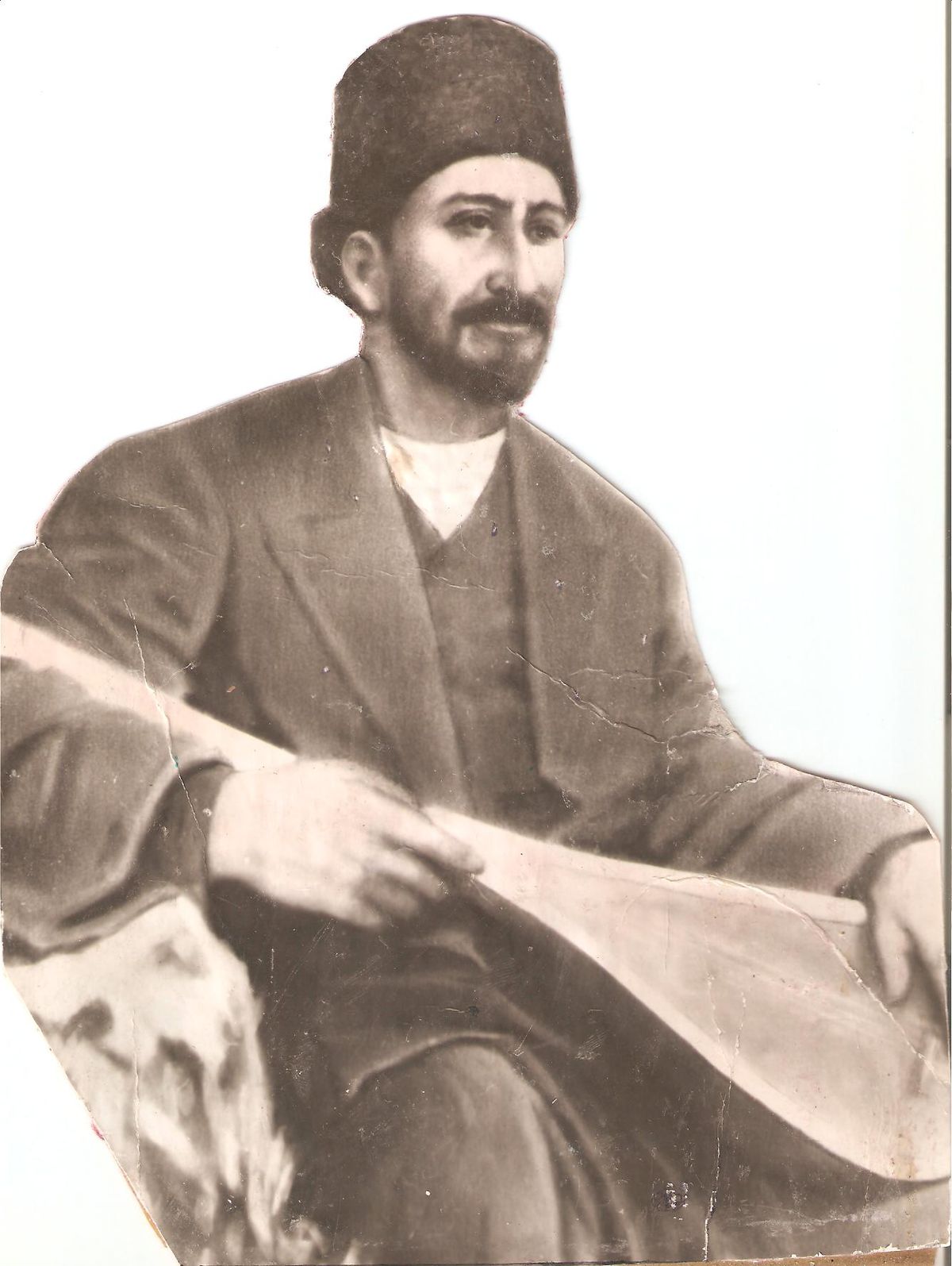
XVI-XVII centuries in Azerbaijan literature are also famous as the period of formation of middle century love and heroic eposes. In the works of Gurbani, Ashiq Abbas Tufarganli, the representatives of oral folk-lore we are about to see the same experience of Fuzuli in written poetry. Perfect love eposes like 'Ashig Garib', 'Abbas and Gulgaz', 'Asli and Kerem', heroic epos 'Koroglu' as the heir of 'Kitabi-Dadam Gorgud' are the products of this period and are added into the repertoire of folk artists. Folk poetry samples goshma, gerayli, varsagi, bayati, known to us from the time of Shah Ismail Khatai, progresses. In order to show how Azerbaijan eposes of Middle Centuries effect, it is enough to mention that the subject of ' Koroglu' influenced Turkmen, Uzbek, Tajik, Armenian, Georgian folk-lore and created their own eposes.
Under the influence of another representative of folk creation-ashugs, in XVII-XVIII centuries Azerbaijan literature approaches to life and lively language, this was the foundation of the passage to realism in Azerbaijan literature. Though the traditions of Fuzuli still have a strong effect, such artists as Saib Tabrizi, Govsi Tabrizi, Muhammed Amani tried to be free from this effect. In the works of Shakir, Nishat and Mahjur, the poets of XVIII century Shirvan literary environment, we may see the description of different problems of the time, as well as an artistic expression of anxiety about the terrible life condition of simple people.
Molla Veli Vidadi (1707-1808), especially Molla Panah Vagif (1707-1797), with their works written in plain, lively language brought the poetry close to the people. In Vidadi's epic 'Musibatname' many of historical events and personalities found their high poetic-vivid description. In this period the poetry tries to avid the control of special individuals, and embraces the all, becomes more popular. People quickly approach to and join with aesthetic values. The creativity of Vagif plays a particular role in this meaning. With simple, real, world beauty images, from classic romantic art, he made a great step towards realism and defined the further direction of the development of the literature. Vagif was also a famous political figure of his time, for a long time defined the foreign affairs of Karabakh khanate. XVIII century in Azerbaijan literature serves is a passage between middle ages and the beginning of a new period.



